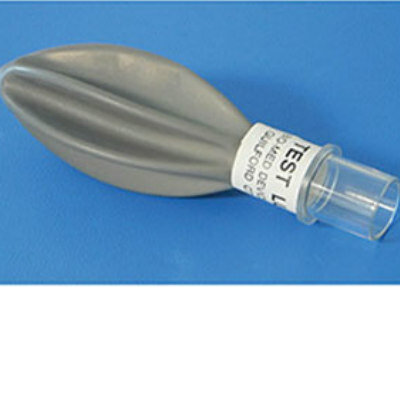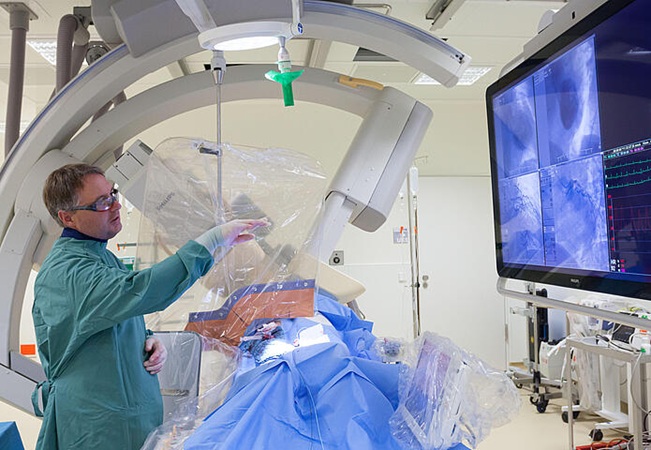Pediatric Breathalyzer Identifies Disease by Analyzing Exhalations
|
By HospiMedica International staff writers Posted on 19 Oct 2016 |
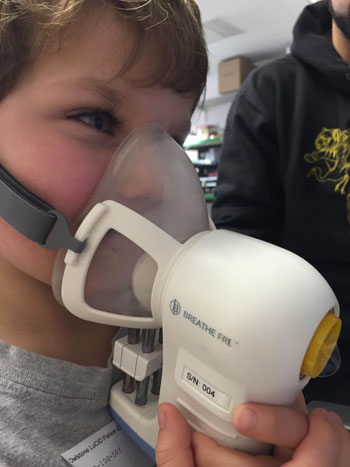
Image: The ReCIVA breathalyzer (Photo courtesy of Owlstone Medical).
A novel breath-testing device aids early stage diagnostics and therapy response in both adults and child asthma patients.
The Respiration Collector for In Vitro Analysis (ReCIVA) device is designed to accurately and selectively detect volatile organic compounds (VOCs) in breath that have been shown to correlate to inflammatory subtype in asthma, and can thus help guide better treatment decisions. ReCIVA is used in combination with the proprietary field asymmetric ion mobility spectrometer (FAIMS) sensor platform, a technology that can be programmed in software to detect targeted biomarkers of disease not only in breath, but in bodily fluids as well.
FAIMS can be also used in clinical diagnostics and precision medicine, with applications both in cancer and in a wide range of other medical conditions. The highly sensitive and selective tests allow for early diagnosis when treatment is more effective, resulting in more lives saved. The ReCIVA breathalyzer platform was adapted to a pediatric version intended for children five years of ages and up, offering a completely non-invasive way to test children’s breath.
Both the adult and pediatric versions of the breathalyzer have been implemented in the East Midlands Breathomics Pathology Node (EMBER), a £2.5 million project with the primary aims being development of breath-based systems for molecular pathology of disease, and clinically validating breathomics as a viable diagnostic modality. The ReCIVA breathalyzer is a product of Owlstone Medical (Cambridge, United Kingdom), and has received the European Community CE mark of approval.
“Breath analysis presents a significant opportunity to better predict how a child will respond to certain treatments, including steroids and expensive biologics,” said Billy Boyle, co-founder and CEO of Owlstone Medical. “In developing a pediatric breath sampler we are expanding the scope of projects such as EMBER to include children as an important group in the study of asthma, and more generally extending other biomarker and discovery studies using breath.”
“Choosing the right treatment for the right patient is especially challenging in children, as obtaining samples such as blood to measure disease activity can be difficult,” said professor of respiratory medicine Chris Brightling, PhD, of the University of Leicester (United Kingdom) and EMBER. “Breath analysis offers an excellent opportunity to sample the airway by simply breathing into a mask. This presents a new approach to understand disease and make better treatment decisions.”
Related Links:
Owlstone Medical
The Respiration Collector for In Vitro Analysis (ReCIVA) device is designed to accurately and selectively detect volatile organic compounds (VOCs) in breath that have been shown to correlate to inflammatory subtype in asthma, and can thus help guide better treatment decisions. ReCIVA is used in combination with the proprietary field asymmetric ion mobility spectrometer (FAIMS) sensor platform, a technology that can be programmed in software to detect targeted biomarkers of disease not only in breath, but in bodily fluids as well.
FAIMS can be also used in clinical diagnostics and precision medicine, with applications both in cancer and in a wide range of other medical conditions. The highly sensitive and selective tests allow for early diagnosis when treatment is more effective, resulting in more lives saved. The ReCIVA breathalyzer platform was adapted to a pediatric version intended for children five years of ages and up, offering a completely non-invasive way to test children’s breath.
Both the adult and pediatric versions of the breathalyzer have been implemented in the East Midlands Breathomics Pathology Node (EMBER), a £2.5 million project with the primary aims being development of breath-based systems for molecular pathology of disease, and clinically validating breathomics as a viable diagnostic modality. The ReCIVA breathalyzer is a product of Owlstone Medical (Cambridge, United Kingdom), and has received the European Community CE mark of approval.
“Breath analysis presents a significant opportunity to better predict how a child will respond to certain treatments, including steroids and expensive biologics,” said Billy Boyle, co-founder and CEO of Owlstone Medical. “In developing a pediatric breath sampler we are expanding the scope of projects such as EMBER to include children as an important group in the study of asthma, and more generally extending other biomarker and discovery studies using breath.”
“Choosing the right treatment for the right patient is especially challenging in children, as obtaining samples such as blood to measure disease activity can be difficult,” said professor of respiratory medicine Chris Brightling, PhD, of the University of Leicester (United Kingdom) and EMBER. “Breath analysis offers an excellent opportunity to sample the airway by simply breathing into a mask. This presents a new approach to understand disease and make better treatment decisions.”
Related Links:
Owlstone Medical
Latest Critical Care News
- Complete Revascularization Reduces Risk of Death from Cardiovascular Causes
- Tiny Fish-Inspired Robots Navigate Through Body to Deliver Targeted Drug Therapy
- Coronary Artery Stenosis Could Protect Patients from Pulmonary Embolism Effects
- Sweat-Powered Sticker Turns Drinking Cup into Health Sensor
- Skin-Mounted 3D Microfluidic Device Analyzes Sweat for Real-Time Health Assessment
- New Therapeutic Brain Implants to Eliminate Need for Surgery
- Stem Cell Patch Gently Heals Damaged Hearts Without Open-Heart Surgery
- Biomaterial Vaccines to Make Implanted Orthopedic Devices Safer
- Deep Learning Model Predicts Sepsis Patients Likely to Benefit from Steroid Treatment
- Programmable Drug-Delivery Patch Promotes Healing and Regrowth After Heart Attack
- Breakthrough Ultrasound Technology Measures Blood Viscosity in Real Time
- Magnetically Activated Microscopic Robotic Swarms Could Deliver Medicine Inside Body
- Frequent ECG Use Can Identify Young People at Risk of Cardiac Arrest
- Ultrasound Controlled Artificial Muscles Pave Way for Soft Robots
- AI-Powered Alerts Reduce Kidney Complications After Heart Surgery
- Algorithm Predicts and Lengthens Pacemaker Battery Life
Channels
Surgical Techniques
view channel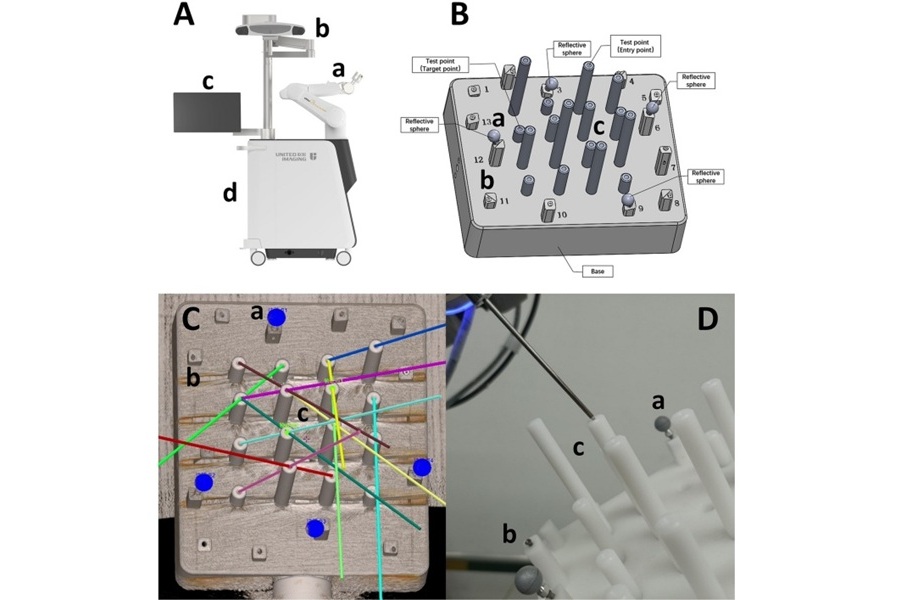
Optical Tracking Method Identifies Target Areas in Robot-Assisted Neurosurgery
Epilepsy occurs when nerve cells misfire and produce uncontrolled electrical bursts in the brain, leading to seizures. While most patients respond to medication, about 30% require more advanced intervention.... Read more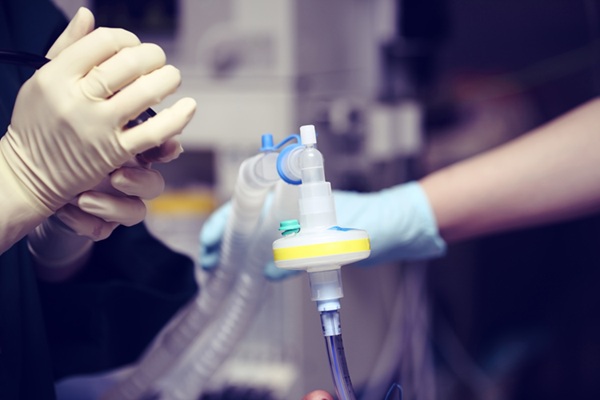
General Anesthesia Improves Post-Surgery Outcomes for Acute Stroke Patients
When treating acute ischemic stroke with mechanical thrombectomy, clinicians traditionally rely on moderate sedation to keep patients awake yet comfortable. Now, new evidence suggests that placing patients... Read morePatient Care
view channel
Revolutionary Automatic IV-Line Flushing Device to Enhance Infusion Care
More than 80% of in-hospital patients receive intravenous (IV) therapy. Every dose of IV medicine delivered in a small volume (<250 mL) infusion bag should be followed by subsequent flushing to ensure... Read more
VR Training Tool Combats Contamination of Portable Medical Equipment
Healthcare-associated infections (HAIs) impact one in every 31 patients, cause nearly 100,000 deaths each year, and cost USD 28.4 billion in direct medical expenses. Notably, up to 75% of these infections... Read more
Portable Biosensor Platform to Reduce Hospital-Acquired Infections
Approximately 4 million patients in the European Union acquire healthcare-associated infections (HAIs) or nosocomial infections each year, with around 37,000 deaths directly resulting from these infections,... Read moreFirst-Of-Its-Kind Portable Germicidal Light Technology Disinfects High-Touch Clinical Surfaces in Seconds
Reducing healthcare-acquired infections (HAIs) remains a pressing issue within global healthcare systems. In the United States alone, 1.7 million patients contract HAIs annually, leading to approximately... Read moreHealth IT
view channel
Printable Molecule-Selective Nanoparticles Enable Mass Production of Wearable Biosensors
The future of medicine is likely to focus on the personalization of healthcare—understanding exactly what an individual requires and delivering the appropriate combination of nutrients, metabolites, and... Read moreBusiness
view channel
Philips and Masimo Partner to Advance Patient Monitoring Measurement Technologies
Royal Philips (Amsterdam, Netherlands) and Masimo (Irvine, California, USA) have renewed their multi-year strategic collaboration, combining Philips’ expertise in patient monitoring with Masimo’s noninvasive... Read more
B. Braun Acquires Digital Microsurgery Company True Digital Surgery
The high-end microsurgery market in neurosurgery, spine, and ENT is undergoing a significant transformation. Traditional analog microscopes are giving way to digital exoscopes, which provide improved visualization,... Read more
CMEF 2025 to Promote Holistic and High-Quality Development of Medical and Health Industry
The 92nd China International Medical Equipment Fair (CMEF 2025) Autumn Exhibition is scheduled to be held from September 26 to 29 at the China Import and Export Fair Complex (Canton Fair Complex) in Guangzhou.... Read more









